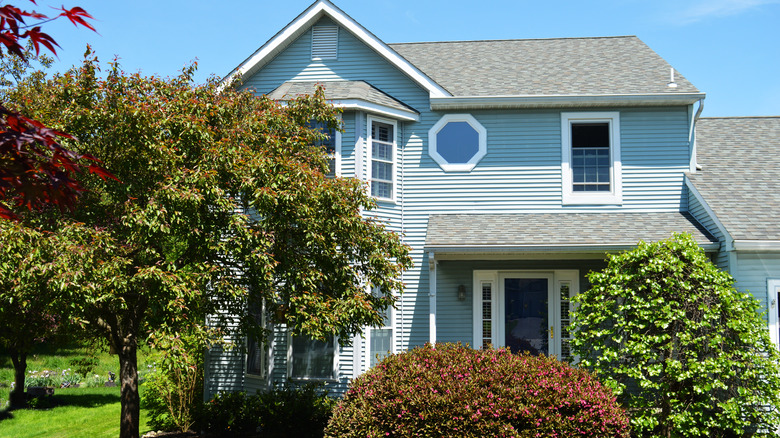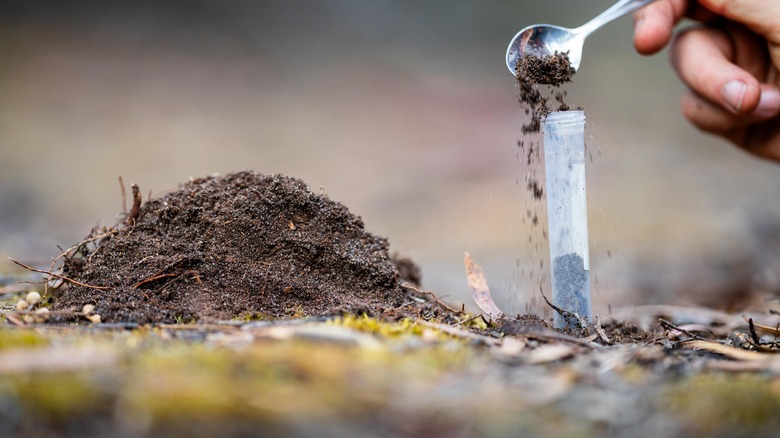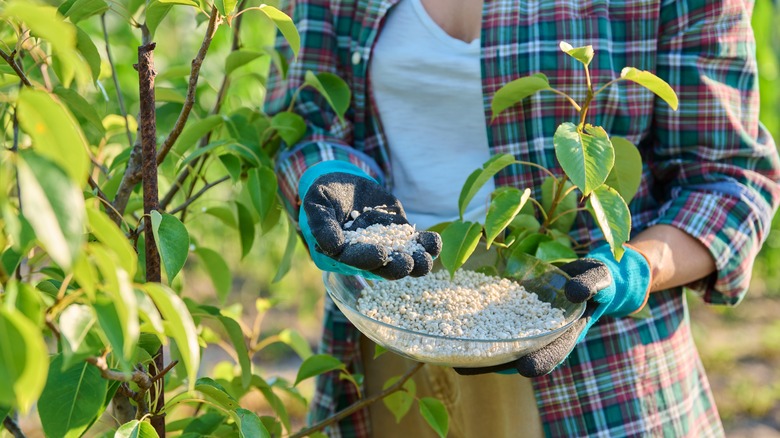Do Trees Really Need Fertilizers? Essential Tips To Help Them Grow
When fertilizing your vegetable garden and annual flowers, you may find yourself wondering if you should give your trees some food as well. While it is easy to forget about the trees in your landscape, especially after they have been established, there are certainly times when the gentle giants of the plant world need some attention and fertilization, too. While there are situations where trees can benefit from fertilizing, it is imperative to consider what kind of trees. Additionally, it's essential to visually examine your trees for signs of nutritional deficiencies or physical damage and do a soil test before immediately assuming they need fertilizer. Just as important as knowing if you should fertilize your trees is knowing when and how to fertilize, as mistakes in fertilizer application can easily harm your trees, as well as the environment.
It's easy to assume that all trees have similar nutritional needs, but nothing could be further from the truth. Some trees, including most conifers, have evolved to live in soils that don't contain much fertility and, in most cases, should be perfectly happy without any added fertilizer. Refer to a soil fertility recommendation chart such as the one created by The University of Georgia Extension to know what fertility and pH conditions your types of trees need. Once you know what growing conditions are best for your tree, it's just a matter of meeting those conditions.
Testing your soil and examining your trees
Testing the health of your soil and comparing the results to your tree's ideal conditions is an essential step for making good choices in fertilizing your trees. Don't forget that trees tend to have quite deep roots, so dig down about 12 inches before taking a soil sample. Whether you opt to send your soil sample to a lab or use a home test, knowing the amounts of nitrogen, phosphorus, and potassium in your soil, as well as your soil's pH, can give you much of the information you need for deciding if your tree needs to be fertilized or given any soil amendments.
Be sure to visually examine your trees as well, but don't assume that adding fertilizer is necessarily the cure for all sickly trees. If your trees look unhealthy but a soil test shows there are adequate nutrients in the soil, then adding fertilizer is unlikely to solve your problems and could even make things worse. Instead, in this situation, look for issues with watering, such as wilting, yellow leaves, disease, or the possibility that your trees are in heat stress.
When and how to fertilize your trees
If both your soil test and an examination of your trees suggest they would benefit from increased soil fertility, it's best to proceed with fertilizing them. This should be done either in early spring or in late autumn while the trees are dormant. A slow-release fertilizer is almost always best, as it is less likely to cause fertilizer burns or runoff that can harm the environment.
While you might instinctively want to place fertilizer as close to the tree's trunk as possible, this isn't the best strategy. Instead, you should apply the fertilizer as far out as the tree's canopy reaches, creating a circle around the tree under its drip line. Remember that you can always add more fertilizer if necessary, but it is far more difficult to take fertilizer away if you over-apply it. Don't forget that if you are container gardening with trees, you will likely need to fertilize more often. Just as annuals growing in containers generally need more fertilizing than those grown in the ground, so also do container trees.


